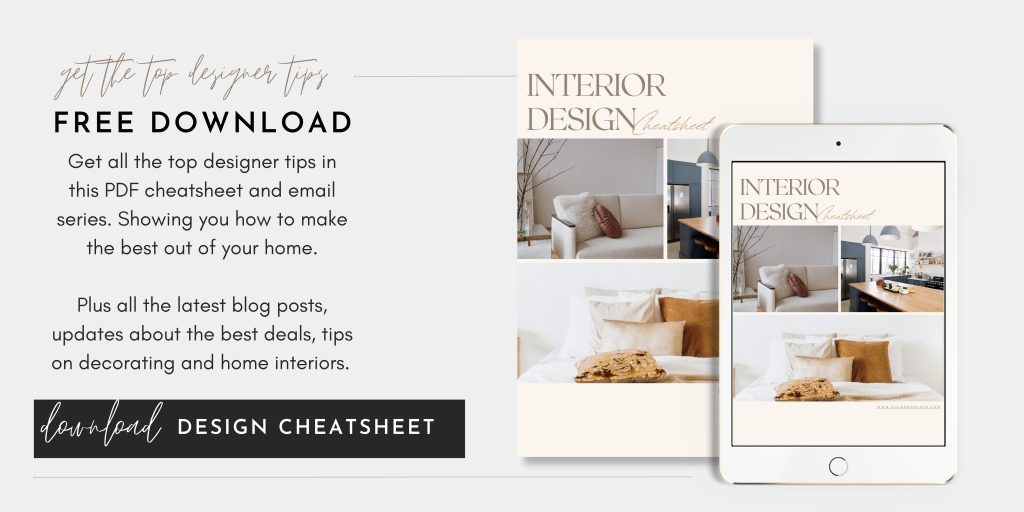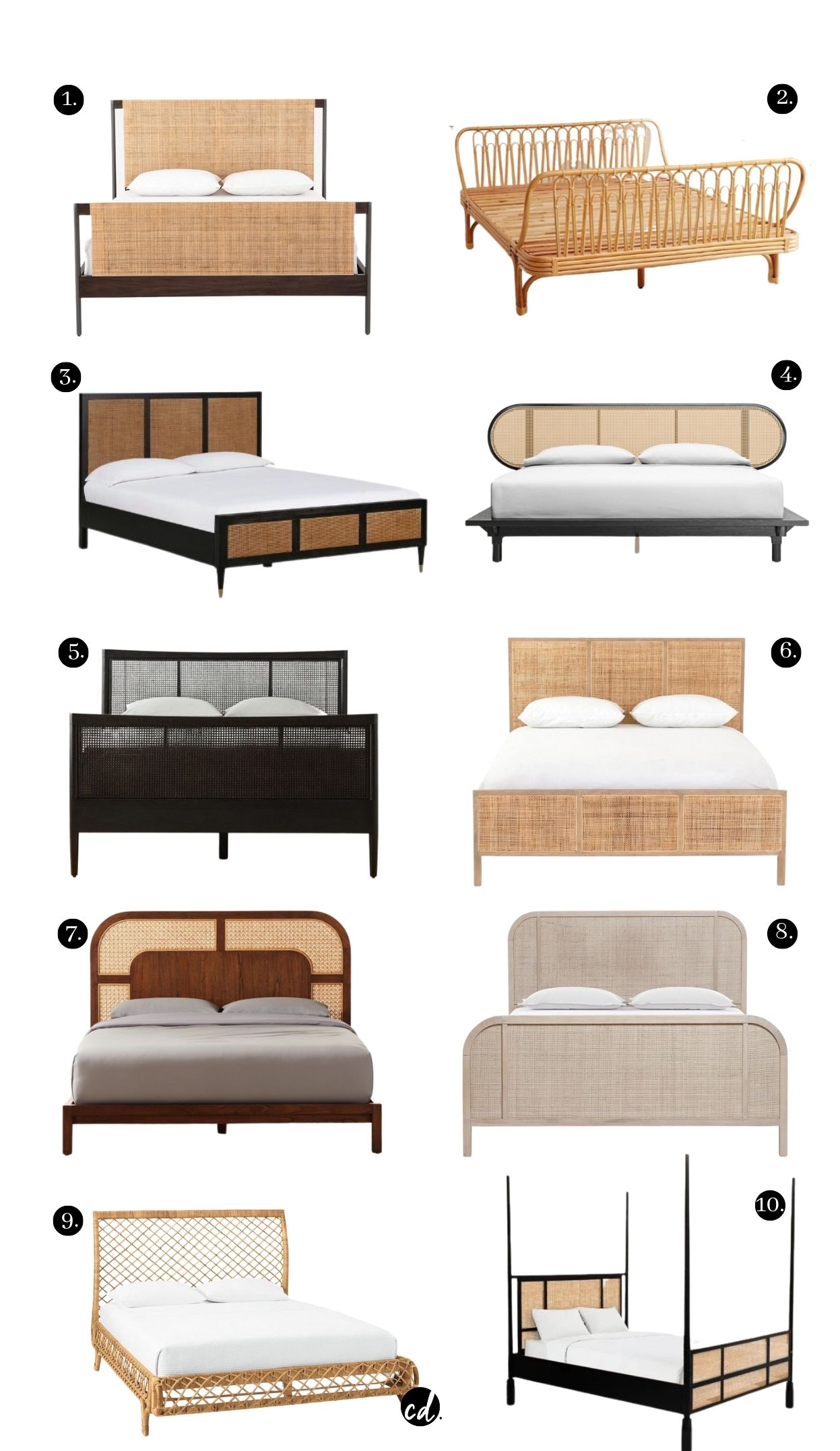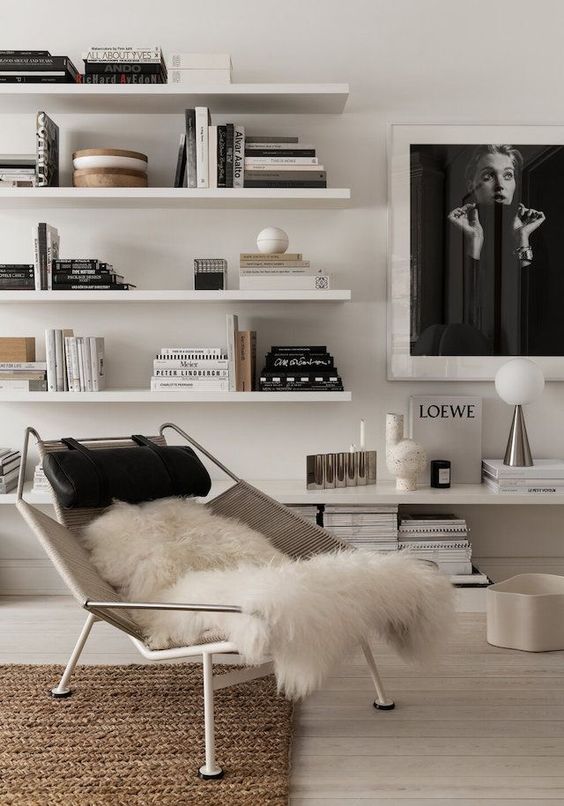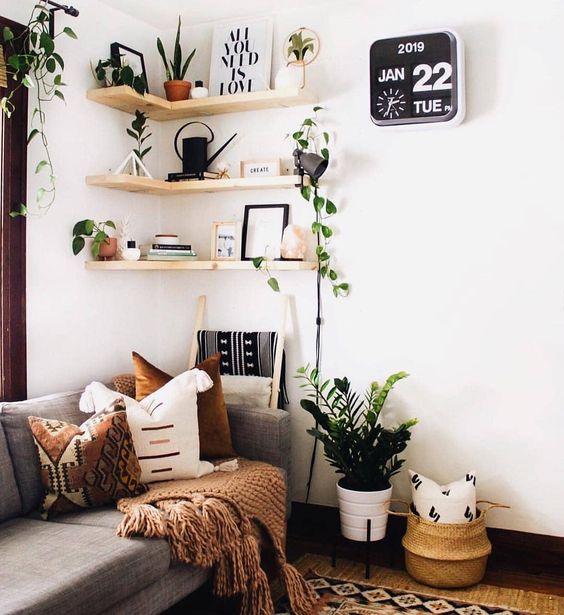How To Create A Mood Board For Interior Design
As someone who loves to plan things out, I always find creating a mood board incredibly helpful! And when it comes to interior design, using a mood board is a simple way to put your ideas together. But also to make sure those ideas work well together!
Quite often we can jump straight into fabric samples and paint samples. And end up doing a whole room makeover before planning anything out.
But a mood board is often a visual tool that’s missed when it comes to bringing a room together. Creating an interior mood board should actually be the first step when it comes to designing a space! (In my opinion).
It sets a clear direction for the style of the space and is a powerful tool to start the design process. It’s the first go-to for any interior designer for an interior design project. But anyone can make their own interior design mood board.
Having a mood board will help save time and money in the long run when decorating your room. It’s fun! And you can make two or more design boards before deciding on a room design.
Here are the best tips on how to make an interior design mood board to get you on the right track.
How to Make An Interior Design Mood Board
What type of mood board are you going to make?
Making a physical mood board can be really fun. But it takes a lot of resources like magazines, paint chips and fabric swatches. However, it’s a useful tool for presenting a creative project for design clients or contractors.
A physical sample board is very handy when working with a team on your design. (It’s something you may want to do later in your project anyway).
A digital mood board is a lot easier and gives you easy access when you’re making design decisions. You have lots of different options to make your interior design mood board.
And to make your design even easier, you can simply download a mood board template to start off. Instead of having to design new boards from scratch.
So this guide will show you the easy way of making your design mood boards online.
Digital Mood Board: What Design Software Is best to use?
Adobe Suite VS Canva
There are lots of online platforms where you can create your own design concepts and different mood board ideas.
I love using Canva to create my mood boards. It’s so easy to use and you can sign up with a free account. Canva is extremely beginner friendly. It’s a very quick go-to alternative to Adobe Photoshop and InDesign.
Using Canva, it’s easy dropping in and swapping around images. They have a photo library you can use for inspiration as well.
With the Canva pro version, their background remover is the absolute best tool to use hands down! Canva has lots of other great features as well. And is always adding more.
RELATED POST: 9 Best Mood Board Apps You Need To Know About 2023
If you’re wanting to get into any area of design, graphics, digital or interior then learning is well worth your time. For just a personal mood board reference, using Adobe might not be needed.
There is so much you can do with the Adobe programs. It comes with a bit of a learning curve. But there are courses you can take to speed up the basic know-hows and design tools. I still use and love Photoshop and Illustrator and tend to use them for big printing projects.
Of course, there are other design software apps you can use on a desktop and on a mobile app. Both Canva and Adobe programs are available on the two devices. There is a step-by-step tutorial on how to use Canva here.
1. Gathering Your Inspiration
Ok! First off are ideas. Very important! If you haven’t already got an idea or a style of what you want for the room then this part is going to take a bit of time. This is your inspiration board and a good starting point.
Often people jump straight into the furniture and interior side of things when making a mood board. Unless you already know the particular style or design direction of where it’s going, then think outside the box of just “interior” images.
Just start by picking out a collection of images that speak to you and get you excited. This is your concept board which will give you different ideas.
Try mixing a few interior images with more abstract ideas like nature and fashion. Using images like these will give you visual references of paint colors and textures you can use in your room design.
Another way to start off your interior mood board is by choosing 3 to 5 descriptive words. Describing how you want your space to look and feel. Then start pulling all images that you feel embody those words.

How to find inspiration?
Where do you go for inspiration? Everywhere! Online and offline. When it comes down to inspiration. Of course, it can be from blogs, photography, fashion and travel.
You might already have an item as a centrepiece to your inspiration. An heirloom, a piece of jewellery, a furniture piece or fabric or wallpaper you love. If that’s the case you can design your own mood board around it for your overall design.
You can start with a Pinterest board or another online platform and pull your ideas all together. Or just a folder on your computer or phone. For any inspiration items you’ve found offline just remember to take a photo to put with the rest of your ideas.
Look at nature. From there you can pull out shapes, colours, textures and so much more.
2. Refining and Focus
The great thing about using a mood board is there are so many different ways to about one thing. Someone can interpret words and images in totally different way.
Concept Mood Board Examples
I did a mood board for a cottage core style and the all the images that I picked are things that I thought best captured the cottage core look.
Even though there aren’t any specific furniture or furnishing selections specified yet, the concept mood board gives a definite design direction in what materials and colours can be used.

Natural materials like wickers and rattan from the basket and the white dress from the mood board signifies linens, lace and floaty gauzy fabrics as inspiration for the room.
The colours, off whites, pinks and muted browns. Lots of traditional florals which are some way in every photo, which could be used in a wallpaper, pillows or throws.
The other images of the cottage and the tea room speak to how the space should feel and how it might be used.
Of course, there are so many other versions and interpretations of cottage core and other styles but this just happened to be one I came up with.
Now that you have put some of your favourite ideas together you can focus on what you like. What are your absolute favourite images? What do you like about those images? And what ideas and details can you pull from those ideas that will work in your space?
This can be colour, shapes and textures that you can bring into the design of your room. You can also start cutting other ideas that you may like but don’t quite work with the bigger idea.
There should be a few recurring styles and ideas that you feel sit well together. Play around with the arrangement of images until you’re happy with the layout.
Of course, there are so many other versions and interpretations of cottage core and other styles but this just happened to be one I came up with!
3. What’s The Feeling of Your Room?
Remember that the mood board isn’t just about furniture selections and styles it’s more about the feeling.
What feeling do you get when looking at the mood board? Is that the feeling you want for your room? Is it a Scandinavian look you’re going for? Or a cozy cottage vibe? A blend of interior design styles can work too.
It might be an idea to put together a couple of mood boards before you decide on a look that will suit the room.

4. Furniture Selections
Now that you have your favourite images selected, you can look for images of furniture that work for your design mood board. It helps to plan out the bigger furniture pieces first. You can make a separate page where you can arrange your furniture.
Once you have the basis of how you want the room to look and feel now you can make those all-important selections on color schemes, fabric swatches and different materials.
This is how your mood board will keep you on the straight and narrow without straying too far off course! Hopefully not at all!
And when it comes down to your furniture selections make sure to measure and measure again! It would be such a downer to find a piece of furniture that fits in with the style of your mood board but doesn’t fit your space!
So when shopping remember to refer to both your mood board and all your measurements.
5. Decor & Furnishings
Next comes the home decor and furnishings you can add to your mood board. With home decor you don’t have to plan everything down to the last piece. There might be a couple of key pieces you can add to your mood board.
From Design Mood Board to Interior Room Design
The great thing about using a mood board is there are so many different ways to about one thing. Someone can interpret words and images in a totally different way.
I did a mood board for a cottage core style and all the images that I picked are things that I thought best captured the cottage look.
Even though there aren’t any specific furniture or furnishing selections specified, the mood board gives a definite design direction in what materials and colours can be used.
Natural materials from the basket and the white dress from the mood board signifies linens, lace and floaty gauzy fabrics as inspiration for the room.
The colours, off whites, pinks and muted browns. Lots of traditional florals which are some way in every photo, could be used in a wallpaper, pillows or throws.
The other images of the cottage and the tea room speak to how the space should feel and how it might be used.
What To Include In Your Interior Design Mood Board
To complete From your interior design moodboard to your room design these are the design elements to include in your final project:
- Paint colours or wallpaper
- Lighting
- Window treatments
- Flooring
- Rugs
- Furniture
- Cushions and throw blankets (and other soft furnishings)
- Artwork
- Decor accessories
- Appliances
- Hardware
- Images of materials (like tiling, wood and marble etc.)
Try different directions and see where it takes you!
Chloe

This post contains some affiliate links which I may make a small commission from should you purchase something. For more information check out the disclosure and terms and conditions page.






